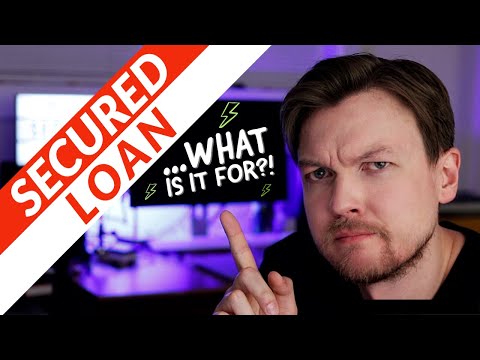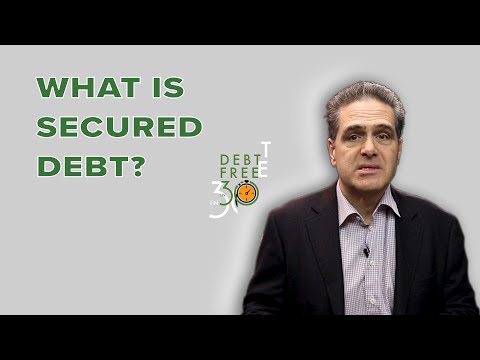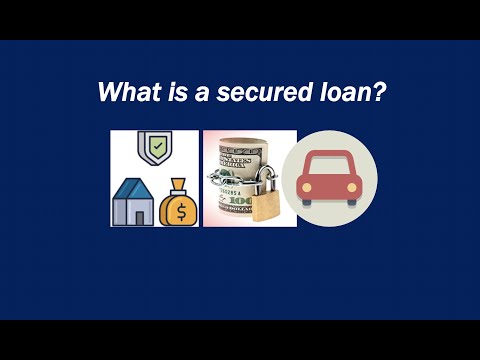Secured debt, in its simplest form, is debt ‘secured’ by collateral, reducing associated lending risks. Now, if you find yourself scratching your head, imagine debt as a game of poker. Here, the collateral is your poker chip, creating a sort of safety net, ensuring that even if you go all in and lose, a fallback is at hand. Now, how does this play into homeownership? Let’s delve in.
Let’s romp around the real world scenarios. Traditionally, a house serves as collateral for a mortgage loan; we call this ‘secured debt’. As an aspiring homeowner, going this route could snag you lower interest rates and extended repayment periods. So really, it’s akin to having your cake and eating it too! In essence, secured debt could be your golden ticket into the homeownership carnival. However, it isn’t always rosy; there are potential pitfalls, like risk of foreclosure, but its advantages outweigh these. A peek into the real world makes this even clearer. Many homeowners attest that without this financing tool, their homeownership dreams would remain just that, dreams.

The Dichotomy Between Secured and Unsecured Debt
As the saying goes, “different strokes for different folks.” This couldn’t ring truer than when exploring secured and unsecured debt. Putting it simply, secured debt is like a lock and key affair; your collateral, say a house, is the key to your loan. If you default? Say goodbye to your collateral. On the other hand, unsecured debt is akin to a leap of faith. There’s no collateral required, so it’s less risky… for you, not so much for the lender.
The story changes where finances are concerned. Going for an unsecured loan could mean higher interest rates and shorter repayment times.With a lot of plusses and minuses on either side, it’s essential to consider your position as an aspiring homeowner. Here, it’s all about weighing your options and choosing what suits you best. The contrast becomes even sharper when you consider varied scenarios.
For instance, if you’re all propped up to buy a home and have the necessary collateral, a secured loan is your best bet. However, for those shorter on assets but have a stellar credit score, unsecured debt is their jam. So to pin it down to one route would be impractical; instead, play it by your playbook.
The Inner Workings of Secured Debt

Next up, let’s pull back the curtains on how this secured debt ‘machine’ operates. Starting from a loan application to a repayment structure, it’s essential to get a good look under this hood. Before we jump in, let’s set this straight; secured debt offers various advantages. However, like everything in life, there’s a flip side.

Take, for instance, that swoon-worthy house that you’re eyeing for a mortgage. By jumping into the secured debt arena, you back this loan with that particular property. If you default, the bank may foreclose on your house. Looking at the brighter side, you likely score lower interest rates and flexible repayment structures. The trick here is not getting bedazzled by those sparkly benefits alone and keeping your eyes wide open to potential risks.
Creativity always comes in handy, especially in terms of handling secured debt. For instance, you can borrow against your home equity or even get a sensible workout plan like arm Exercises With Weights to keep stress at bay. The strategies might vary, but the idea remains the same – Make the most of what you’ve got.

| Topic | Information |
|---|---|
| What is Secured Debt? | Secured debt is debt backed by collateral to reduce lending risk. If the borrower defaults, the bank seizes and sells the collateral. |
| Difference from Unsecured Debt | Unsecured debt has no attached collateral. Secured debts necessitate collateral, while unsecured debts do not. |
| Common Types | Mortgages and car loans are common types of secured loans, using a house or car as collateral respectively. |
| Mortgage Detail | Mortgages are secured loans where the house is used as collateral. Non-payment can lead to foreclosure by the lender. |
| Eligibility for Secured Loan | Applicants must be 18 years or older and a resident of India. NRIs, NROs, NREs, self-employed individuals, and organizations can apply. |
| Advantages | Secured loans offer larger borrowing limits, potentially lower interest rates, longer repayment periods, and possibly tax deductions. |
| Dealing with Secured Debt | If unable to repay, borrowers can surrender the collateral to the bank. The bank sells it at auction, and the borrower is freed from the debt. |
Current Trends and Future Perspectives: Secured Debt in 2024
A lot has changed over the past five years in the secured debt landscape, and the shifts are nothing short of seismic. The dramatic changes in economies worldwide have reinforced that secured debt is not a stand-alone entity, it’s intertwined with broader market shifts.
Looking into the crystal ball, seeing the future of secured debt turns out to be predictably unpredictable. However, trends suggest a more technology-driven approach to lending and possibly Blockchain tech playing a significant role. Digitalization will undoubtedly ease the process, but it’s also poised to streamline the application and repayment structure.

Secured Debt Strategies for Successful Homeownership
Everyone needs a game plan, especially when you’re up on the homeownership battlefield wielding your secured debt sword. Proactive measures and expert insights can make a world of difference.
For starters, get familiarized with your loan eligibility Criteria. Make sure to maintain a good credit score for a smoother ride on the mortgage highway. Additionally, have a look at practical Measures To pay off credit card Debts When money Is tight.

Reflections on Secured Debt: Unlocking the Door to Homeownership
In the end, there’s no denying that secured debt holds the key to homeownership for most. To put it bluntly, if you play your cards right, you can unlock the door to your dream home with this type of debt. However, it’s pivotal to stay informed and make decisions grounded in realism, not impractical optimism.
The call-to-action here? Consider secured debt, get your hands on accurate information, and make moves that fit into your homeownership aspirations neatly, just like a well-constructed puzzle. The conversation isn’t over yet; it’s just the beginning! Remember, the end game here is effective homeownership, and you’re your best ally in this endeavor.
What is a secured debt?
Ah, secured debt! Essentially, it’s a type of loan or obligation that is backed by an asset as collateral. Much like placing a chip in a poker game, this asset could potentially be snatched up by the lender if you can’t make good on your payments.
What is a secured and unsecured debt?
So, what’s the difference between secured and unsecured debt, ya ask? Well, secured debt, like your mortgage and car loans, has something valuable attached to it as collateral, say your house or car. Unsecured debt, on the other hand, such as credit card balances or student loans, isn’t tied to any specific asset.
What is a secured debt in real estate?
In the world of real estate, a secured debt is usually your mortgage. You see, when you signed that mortgage contract, you agreed to give your house as collateral. So, if you don’t meet your mortgage payments, the lender has the right to snag your house, also known as foreclosure.
What type of loan is a secured debt?
If you’re curious about the types of loans that count as secured debt, you’re looking at mortgages, auto loans, home equity loans, and some personal loans. These types of loans require some sort of collateral before they’re granted.
Is secured debt risky?
Risky business, you ask? Secured debt can indeed be risky. If you fail to pay off a secured loan, the bank or lender can legally take your collateral, leaving you in a bind without your car, home, or whatever asset was up for grabs.
How do I clear my secured debt?
And clearing your secured debt? Well, the most straightforward way is to pay it off on time, every payment. But if things have gone south, options like debt consolidation or negotiating with your creditors may help. Remember though, it won’t always be a walk in the park.
What are examples of secured debt?
Examples of secured debt can include things like your home mortgage, car loan, or pawnshop loan. Basically, any loan where you put something up as backup, just in case.
What is an example of a secured loan?
Ah, a secured loan example? Well, think about a car loan. You borrow cash to buy a new ride, but if you don’t keep up those payments, the lender can repossess the car.
Is it a good idea to get a secured loan?
Is it a good idea to get a secured loan? Well, that can be as tricky as a cat on hot bricks. On one hand, it can help build credit or get a better interest rate. But on the downside, you risk losing your collateral if you can’t pay the loan.
Are credit cards secured debt?
Credit cards, my friend, typically represent unsecured debt, not secured. They’re based mainly on your promise to pay, without any collateral.
Is secured debt the same as collateral?
Secured debt and collateral are not the same but are tightly knitted together like a cozy winter sweater. The secured debt is the loan itself, while the collateral is the asset that backs up the loan.
Is secured debt a bond?
Secured debt can also take the form of a bond, called a secured bond. The bond issuer uses specific assets as collateral, ensuring repayment to investors if the company goes belly-up.
What are the advantages of a secured debt?
Advantages of secured debts? Well, they can sometimes be a necessary evil. They often come with lower interest rates, higher borrowing limits, and can even help improve your credit score if managed responsibly.
What is a hardship loan?
A hardship loan is a personal loan designed for folks hit by a financial curveball. It can provide a lifeline when you’re navigating rough waters, like a job loss or a medical emergency.
What are the characteristics of a secured debt?
The characteristics of secured debt are easy enough to remember: it involves a borrowed amount, requires collateral, comes with a repayment schedule, and has legal repercussions for non-payment.
What is a secured debt example?
A day-to-day example of secured debt might be that auto loan you took out to buy your dream car. The loan is secured because if you default, the cards on the table, and the lender could come after your car.
What are examples of secured loans?
Secured loans’ examples? Think mortgages, auto loans, or home equity lines of credit. In each case, there’s an asset standing behind the loan.
What are examples of secured creditors?
Secured creditors might include your mortgage company, auto loan provider, and the bank that granted you a home equity line of credit. Essentially, they can all make a play for your assets if things get rocky with repayments.
Is a secured loan good or bad?
Is a secured loan good or bad? Well, it’s not as simple as black and white. While they can offer lower interest rates and larger loan amounts, they also carry the risk of losing your collateral if you can’t make the payments. So, proceed with caution.



